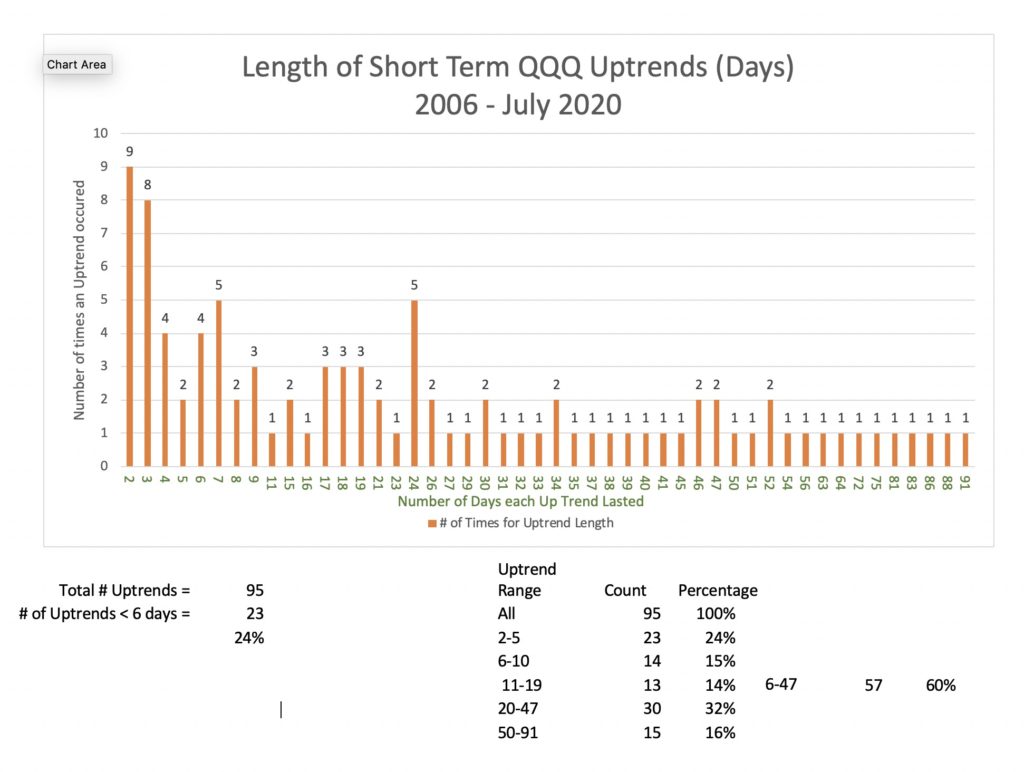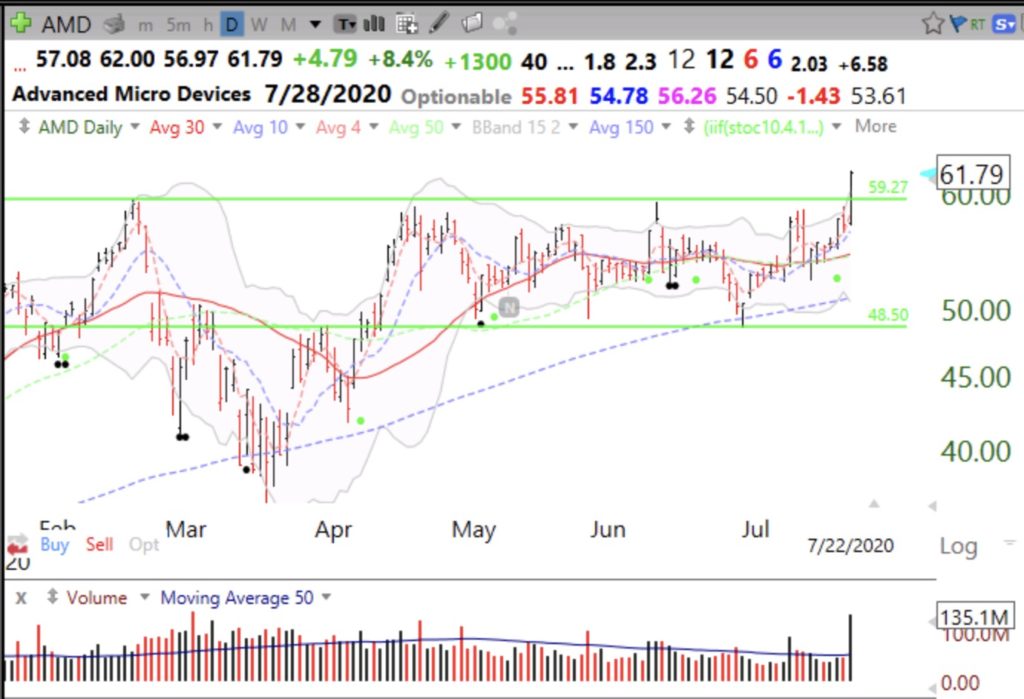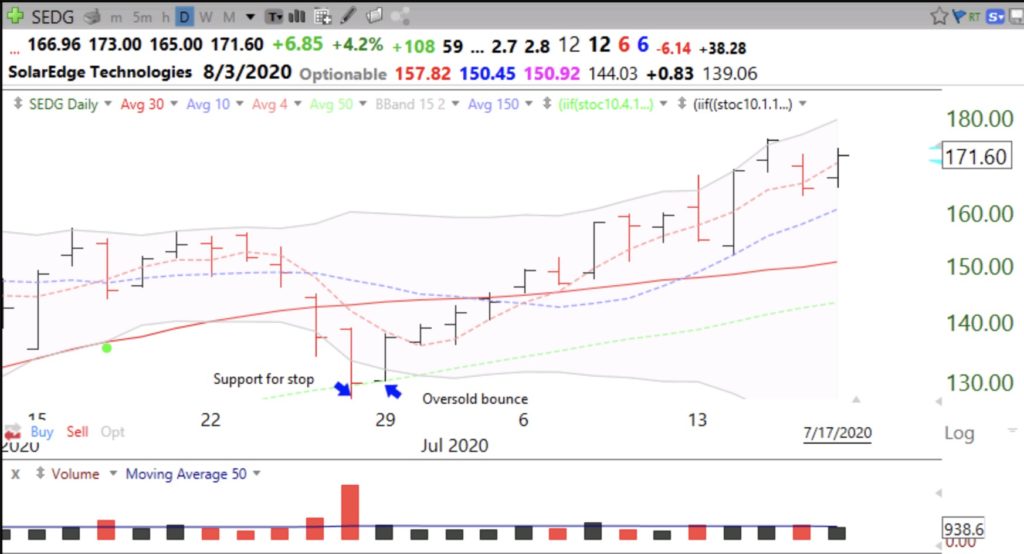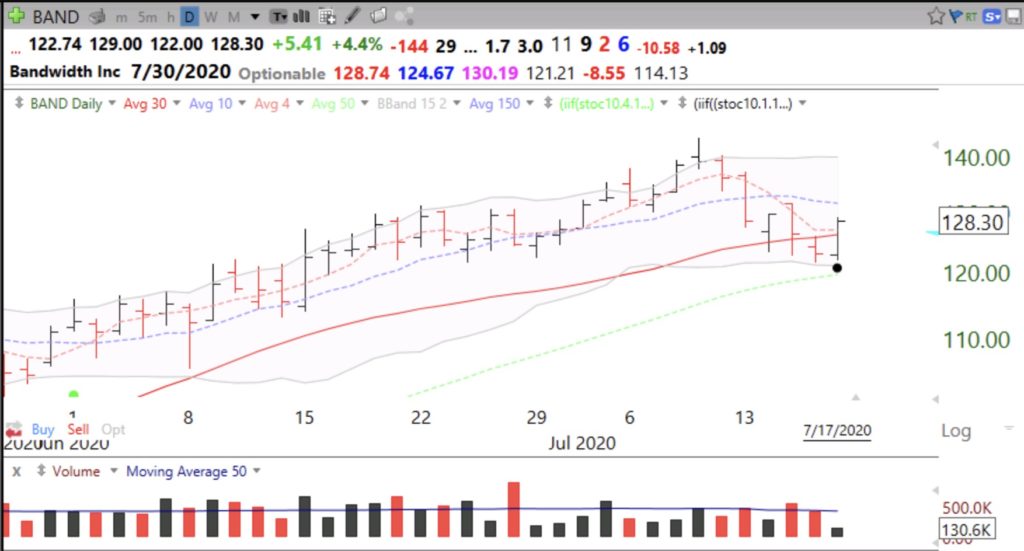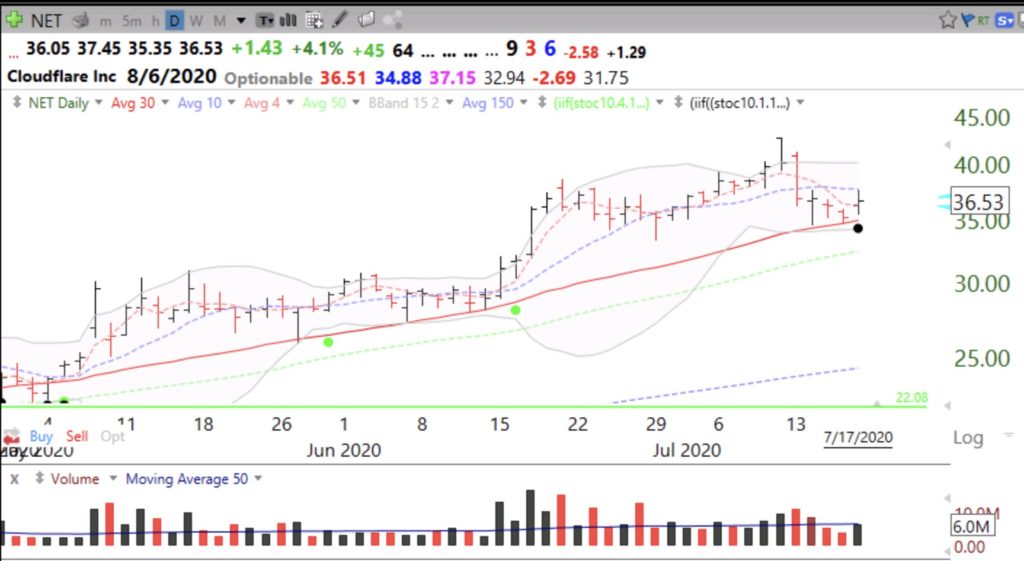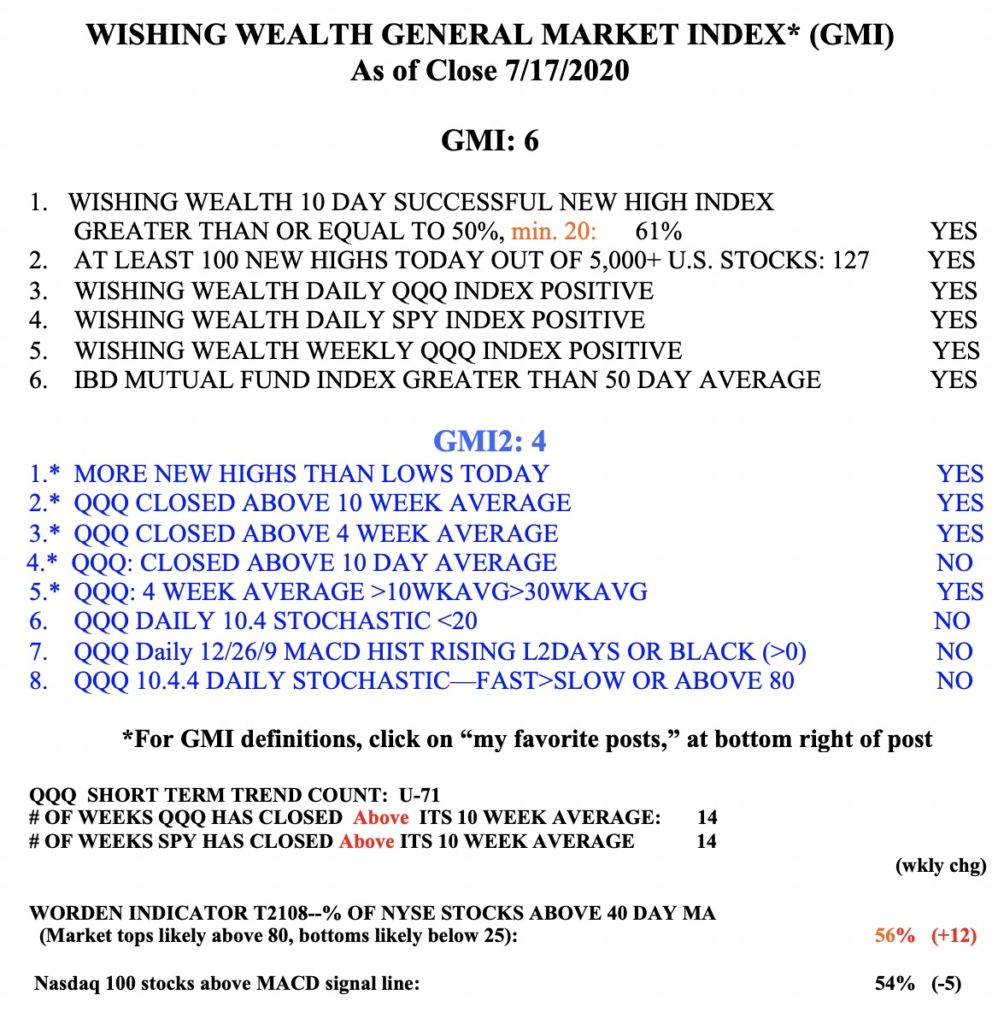In the near future I will show you how to create a GLB alert in TC2000. You might want to get the Gold software option for TC2000 to be ready. You may use the coupon tab on my blog to get a discount and start reviewing the tc2000.com tutorials. TC2000 sent me a text yesterday immediately when AMD crossed the green line. I had created the alert on June 19. Note the nice volume of trading yesterday on the break-out to an ATH.
General Market Index (GMI) table
Blog post: My bounce off of support strategy; Some possible examples: $DDOG, $ETSY, $NET, $BAND, $PLMR, $DOMO, $CIEN, $PING, $ADBE, $AYX, $DSGX.
Almost all of the growth stock strategies my favorite trading gurus (Livermore, Darvas, O’Neil, Minervini) involved searching for strong growth stocks that have already appreciated as much as 100% in the past year, that have formed a base and then break out above the top of the base on greater than average trading volume. They often have different names for their bases: boxes, cup with handle, double bottom and volatility contraction. I coined the term green line break-out (GLB) to designate stocks that reached an ATH, rested at least 3 months and then breakout to a new all-time high (ATH) above the top of their multi-month base, the green line, on above average volume. I like to buy stocks breaking out of a base to an ATH. The problem with this approach is determining where to put a stop loss indicating the break-out has failed. The key to success in this game is controlling losses when a set-up has failed. When I buy a GLB, I sell immediately if the stock closes below its green line, but this can be far below the price I paid for it if the stock moved quickly through its green line.
I have been attracted more and more to an approach where I buy strong growth stocks that have rested and become oversold and then bounce up off of support. I have designed indicators in TC2000 that define an oversold stock and search for them. One of these indicators is the green dot signal where the low fast stochastic turns up and crosses above the slow stochastic. When I buy an oversold stock that is bouncing off of support I then immediately place a stop loss just below the recent low. In this manner I am able to minimize my losses. When I decide to buy such a stock I also make sure that support will not be too far from my purchase price so the possible loss will be low. The famous turtle traders always entered a trade thinking it would fail so they always were prepared with an exit strategy. Most successful traders say that 50% or more of their trades fail. The way to succeed in trading is to have many small losses and a few very large gains. I buy, place a stop loss, and then watch without emotion to see if it succeeds or fails. If it fails I am sold out and if it sets up again, I often buy it back. The shake out often sets up a nice subsequent advance.
Below is an example of SEDG, which I traded using the strategy outlined above. Note the large volume down day before the bounce. That can be a good sign because the weak holders have sold to new holders and many traders may have shorted the stock as it fell, setting up a strong rebound when the stock starts to rise. The key is to wait for the bounce to occur and not jump the gun. The stock could just continue declining.
I ran a scan this weekend for advancing stocks that became oversold and are bouncing up off of support. I am not recommending the purchase of any of these. My goal is to educate my readers and students so they can learn the strategy and evaluate it for themselves. The stocks are: DDOG, ETSY, NET, BAND, PLMR, DOMO, CIEN, PING, ADBE, AYX, DSGX. Check out BAND. My GTC stop would be set below the low from the last 2 days (around 121.49) and hopefully, I would have bought it for less than where it closed on Friday.
NET is another one. It has found support at its 30 day average (red solid line). My stop would be around 34.49.
The GMI remains at 6 (of 6). But the QQQ short term up-trend is 71 days old and the short term sensitive GMI-2 is now 4 (of 8).
Blog post: Day 67 of $QQQ short term up-trend, since 2006 only 7 of 95 up-trends lasted longer
As my readers know, I compute each evening the number of days that the QQQ has been in a short term up-trend or down-trend. (I have a proprietary objective method for designating changes in the short term trend, so don’t ask for it.) Since 2006 there have been 95 short term up-trends. The current up-trend has now reached 67 days. The longest short term up-trend since 2006 lasted 91 days, from October 14, 2019-February 24, 2020. This was followed by a 30 day short term down-trend that included the steep March decline. One of the reasons I became so cautious in February was because the up-trend had gone on for so long. The fact that the current short term up-trend has now reached day 67 leads me to suspect the current up-trend will end soon. The ending of a short term up-trend and the start of a down-trend does not necessarily signify a large market decline. The down-trend could be very short. Nevertheless, I have one foot out the door now. I post the short term trend count, now U-67, in the GMI table each weekend.